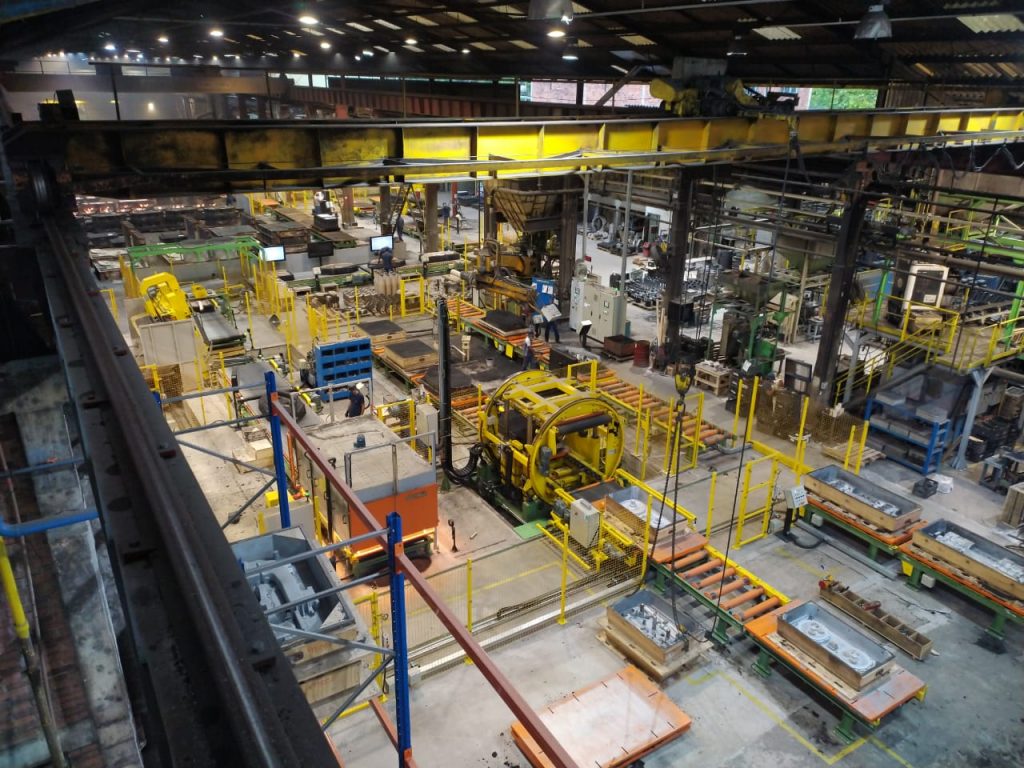
The application range of Fast Loop equipment covers molds from 800x800x100/100 mm up to 1800x3400x680/680 mm.
Production rates vary from 8 molds/hour to 30 molds/hour, depending on mold size and the devices used.
The level of automation can be tailored according to the client’s specific requirements. KNBS can supply semi-automatic or even fully automatic systems.
For more advanced systems, it is possible to implement a production management program that is reliable and easy to install, automatically performing all required operations based on data entered via a computer.
A diagnostics system is also available, monitoring the performance of each component within the entire molding system.
The pattern change area allows easy access to the pattern for cleaning and for preparing the molding boxes. The pattern change process can be integrated with a computer-controlled automatic pattern storage system. All pattern change operations are performed within the cycle time, with no need to stop production.
The mixers used to fill the mold have capacities ranging from 6 to 60 t/h and can be single-arm or double-arm, typically with servo-assisted movement.
The mold filling phase is completed with the help of a vibrating table, ensuring optimal mold compaction. The vibration intensity is adjusted according to mold characteristics, and an automatic leveler removes excess sand, resulting in a perfectly flat mold surface opposite the pattern
The molding area includes curing stations, which vary depending on the process and the hourly production rate of the system. Mold carrier plates are moved to the curing stations via a special motorized drive in each section, enabling smooth acceleration and deceleration ramps.
The mold stripping area is fully automated and operated by a Rollover-type machine, which also sends the mold to the coating line and returns the pattern plate to the molding loop. If stripping fails, the machine automatically repeats the operation until the correct result is achieved.
The coating operation is made easier by dedicated stations that handle the mold and position it in the most ergonomic and suitable orientation for the chosen coating method.
Drying is typically carried out in a hot air tunnel. Optionally, a pre-drying tunnel may be installed before the coating station to assist in accelerated drying.
The core setting line allows easy access to the molds, facilitating core assembly.
This type of carousel is specifically designed for NO-BAKE molding of small-sized molds.
It combines cost-effective operation and low initial investment with high productivity, reaching up to 30 complete molds per hour. The mixing of new and reclaimed sand with resin and catalyst for all NO-BAKE processes is ensured by a high-speed mixer, single-arm type MK/12, with a capacity of 12 tons/hour.
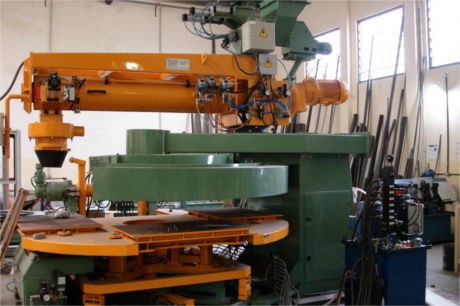
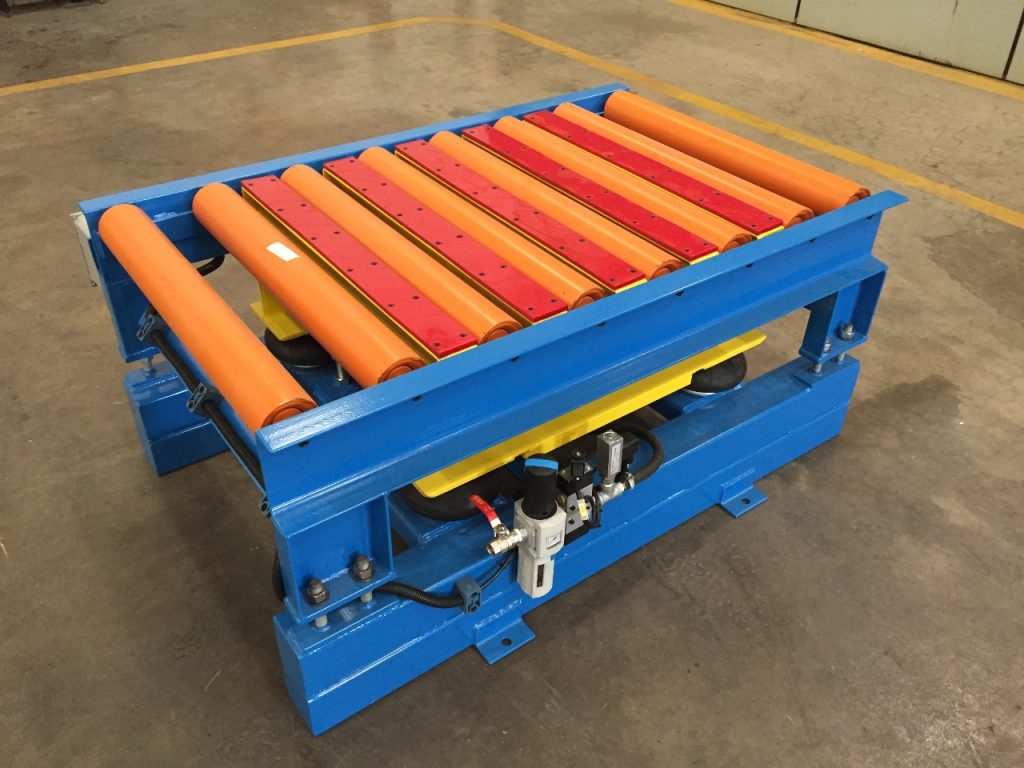
KNBS vibrating tables have a standard load capacity ranging from 0.25 to 50 tons, with the possibility of working with other capacities through custom designs.
The compaction of molds, core boxes, or boxes from any no-bake process is achieved by lifting the vibrating section of the table between two rollers until it makes contact with the support plate.
The vibrators generate a perfectly unidirectional vibration, perpendicular to the vibrating plane. The amplitude is adjustable from zero to maximum by manually adjusting the position of the rotating masses, and the vibration time can be set manually or automatically. When the machine is used in standalone mode, these operations are performed by the operator via a lever- or pedal-operated distributor.
The contact surface is coated with special anti-wear rubber, keeping the noise level within legal limits.
High-efficiency pneumatic actuators isolate the vibrating section from the ground, preventing vibration transmission to the installation.
These vibrating tables allow for notable binder savings, while compaction improves the mechanical properties of the mold. The vibrating table can be equipped with an automatic frequency regulator, allowing vibration frequency adjustments to match different mold types and sizes, as well as the types of binders used.
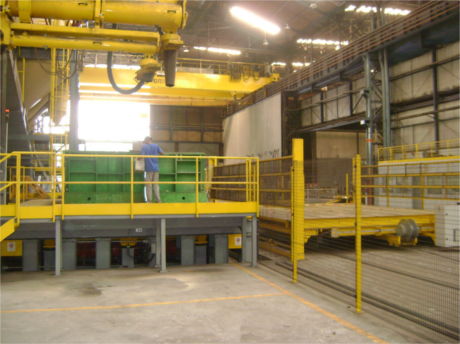
The machine rotates and perfectly strips the mold mounted on the plate, allowing the production of molds, cores, or boxes within the same production cycle, as all operations are based solely on the pattern plate, which is hydraulically locked on the input roller line.
Operation is fully automatic, with the option to switch to manual control at any time. The drive systems are primarily hydraulic, controlled by proportional valves, since acceleration/deceleration must be handled via adjustable ramp control.
An automatic extraction control system enables unattended operation. Automation is managed via a PLC.
This type of Rollover stripper is mainly used in Fast Loop automatic molding systems, but it can also be integrated into semi-automatic or manual molding systems, or even operated individually.
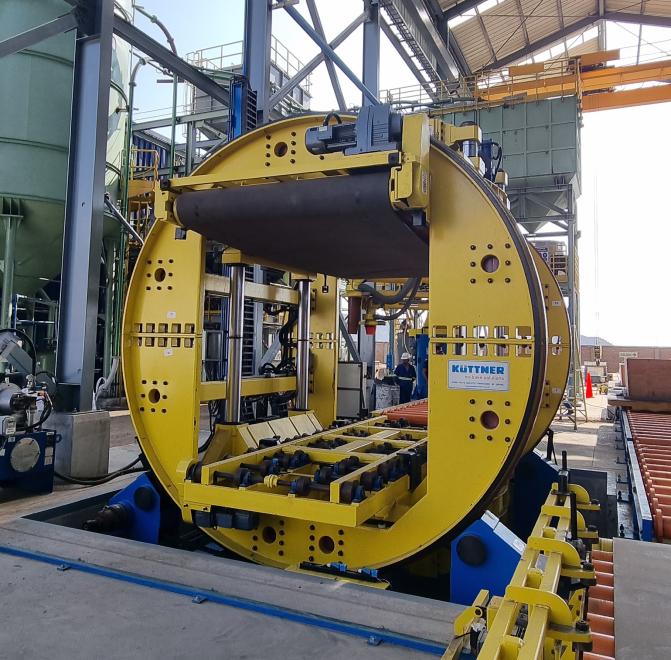
KNBS coating stations can be used with all major coating methods: washing, airless, spraying, and with all types of coatings commonly used in foundries, whether water-based or alcohol-based. Excess coating is collected in specially designed tanks located just below the manipulators that hold and position the molds for this process.
In washing-type coating, a pump filters and recirculates the paint. An optional sliding tray minimizes sand spillage into the tank during mold cleaning operations.
For alcohol-based coatings or spray applications, an exhaust hood may be installed to ensure working conditions comply with safety standards.
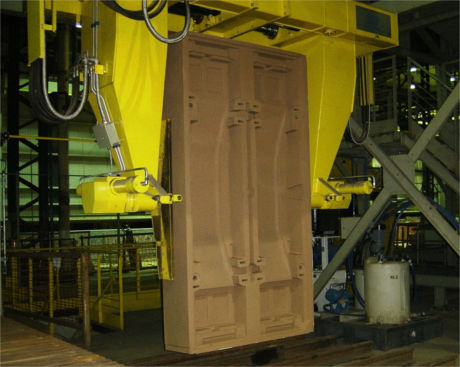
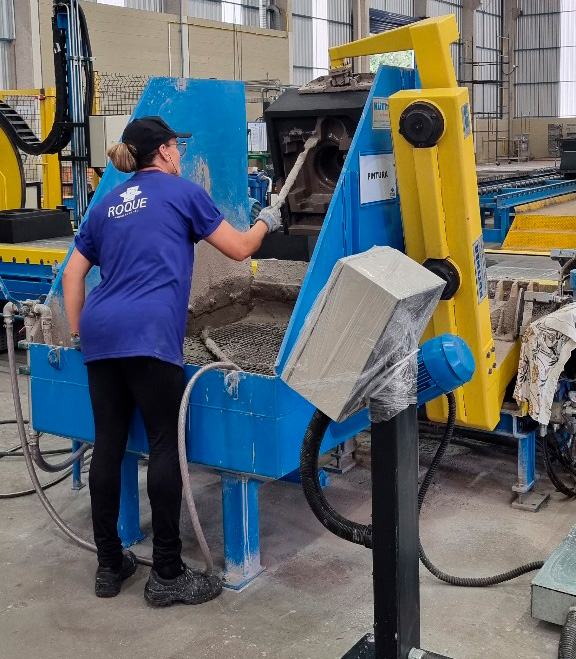
The mold closing process can be carried out manually, using manually operated manipulators, or through automatic closing, in which case manipulators perform the entire mold closing process automatically
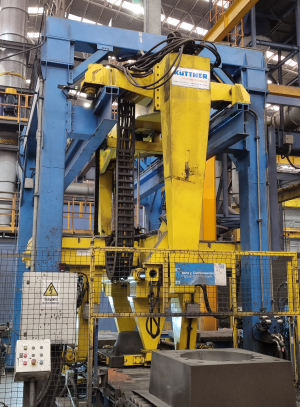
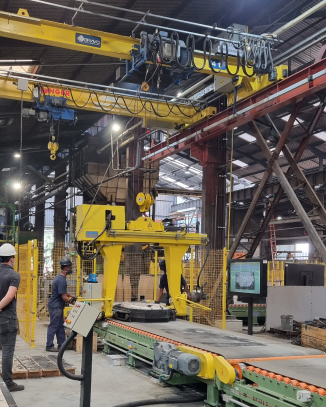
Explore todos os produtos